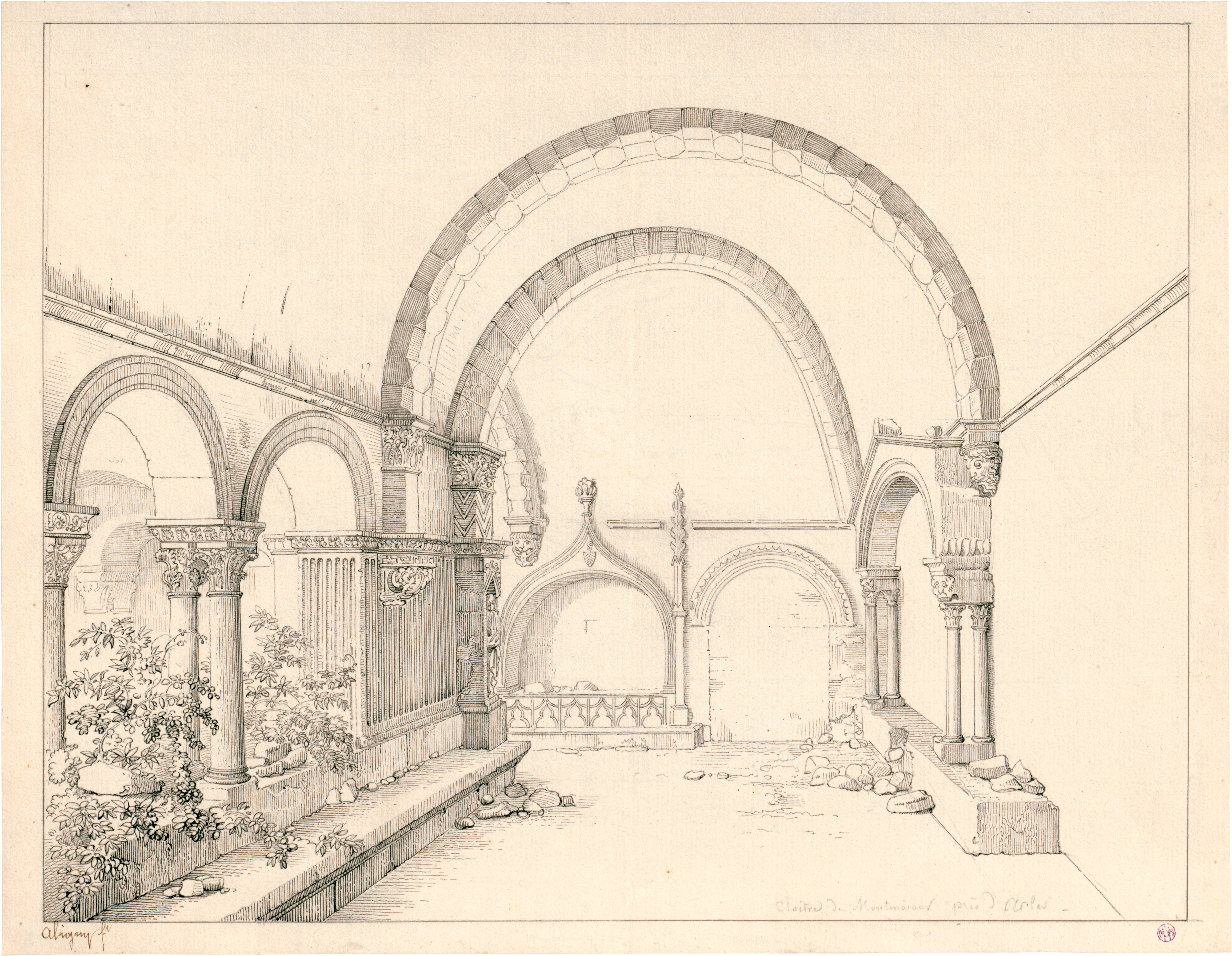Loading the page ...
Théodore Caruelle d’Aligny
(1798 Chaumes – 1871 Lyon)
The Cloister of Montmajour Abbey near Arles. Pen and black ink. 25.2 x 32.4 cm. Signed “Aligny ft.”; “Cloitre de Montmajour près d’Arles” inscribed in pencil in the artist’s own hand. Marie-Madeleine Aubrun, Théodore Caruelle d’Aligny 1798–1871. Catalogue raisonné de l’Oeuvre peint, dessiné, gravé, Paris 1988, D. 736.
The painter and draughtsman, Théodore Caruelle d’Aligny, who was trained in Paris by Jean Baptiste Regnault and Louis Étienne Watelet, is one of the early representatives of plein-air landscape painting in the tradition of Pierre-Henri de Valenciennes. Between 1822 and 1827 d’Aligny lived and worked in Rome, where he associated with like-minded French artists. It was here in 1825 that he met Jean-Baptiste Camille Corot. The two became close friends and collaborated in the years that followed. They wandered together through the Roman Campagna on study trips, d’Aligny acting as the mentor and teacher of Corot, who was two years his senior. Following his return to Paris in 1827, d’Aligny’s landscape paintings made him a forerunner of the Barbizon School.
The present depiction of the medieval cloister of Montmajour Abbey probably belongs to the artist’s early period. The linear purism and the detailed, highly refined and concentrated style of drawing recall the aesthetic approach of the Nazarenes and of Danish artists such as Christoffer Eckersberg and Martinus Rørbye, whose works d’Aligny probably encountered in Rome. The deliberate renunciation of any figurative staffage gives the scene a magic all its own and evokes a secluded, meditative atmosphere. From the collection of Marie-Madeleine Aubrun (Lugt 3508).
Contact us for further information